 Image 1 of 10
Image 1 of 10

 Image 2 of 10
Image 2 of 10

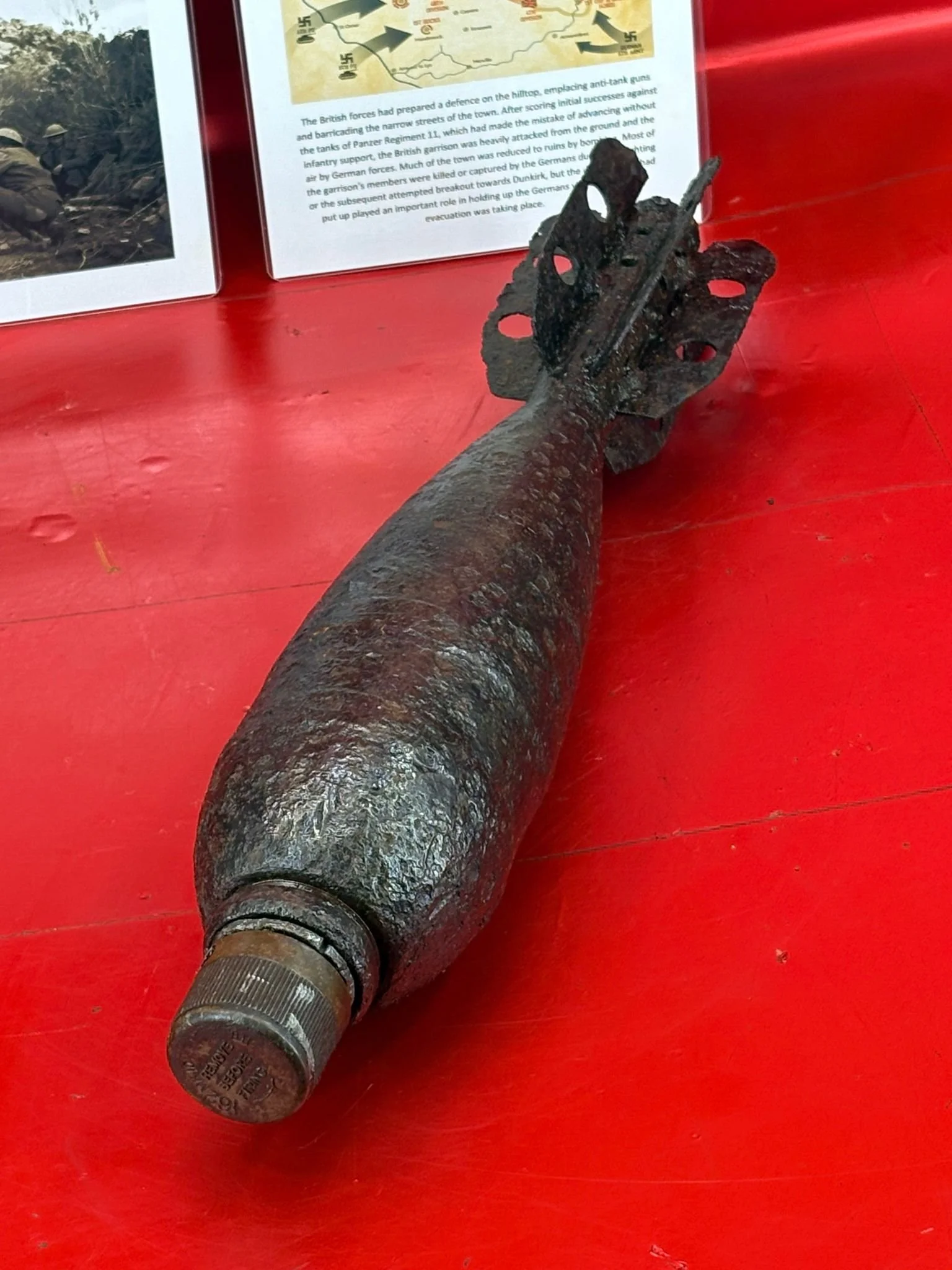 Image 3 of 10
Image 3 of 10

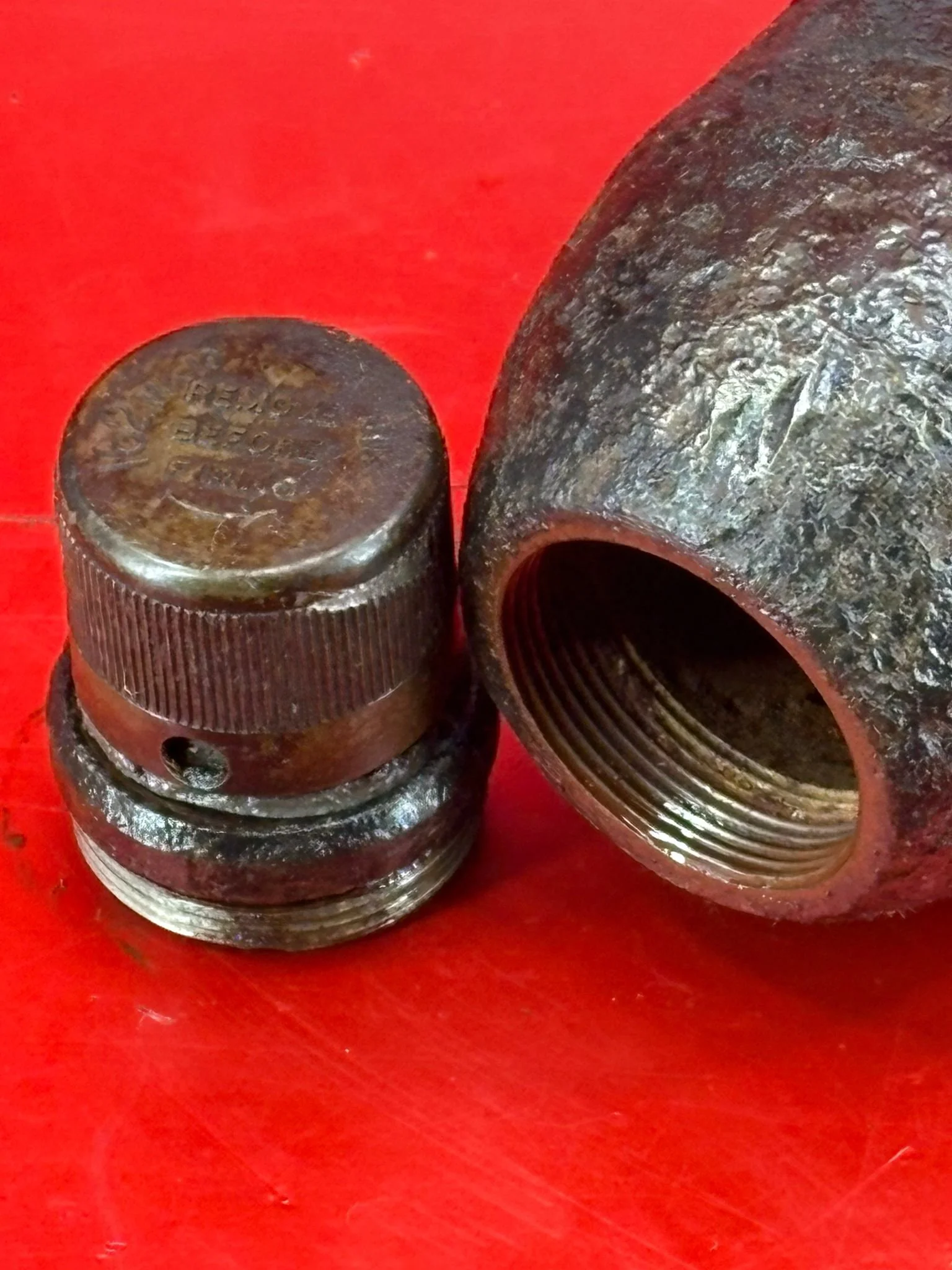 Image 4 of 10
Image 4 of 10

 Image 5 of 10
Image 5 of 10

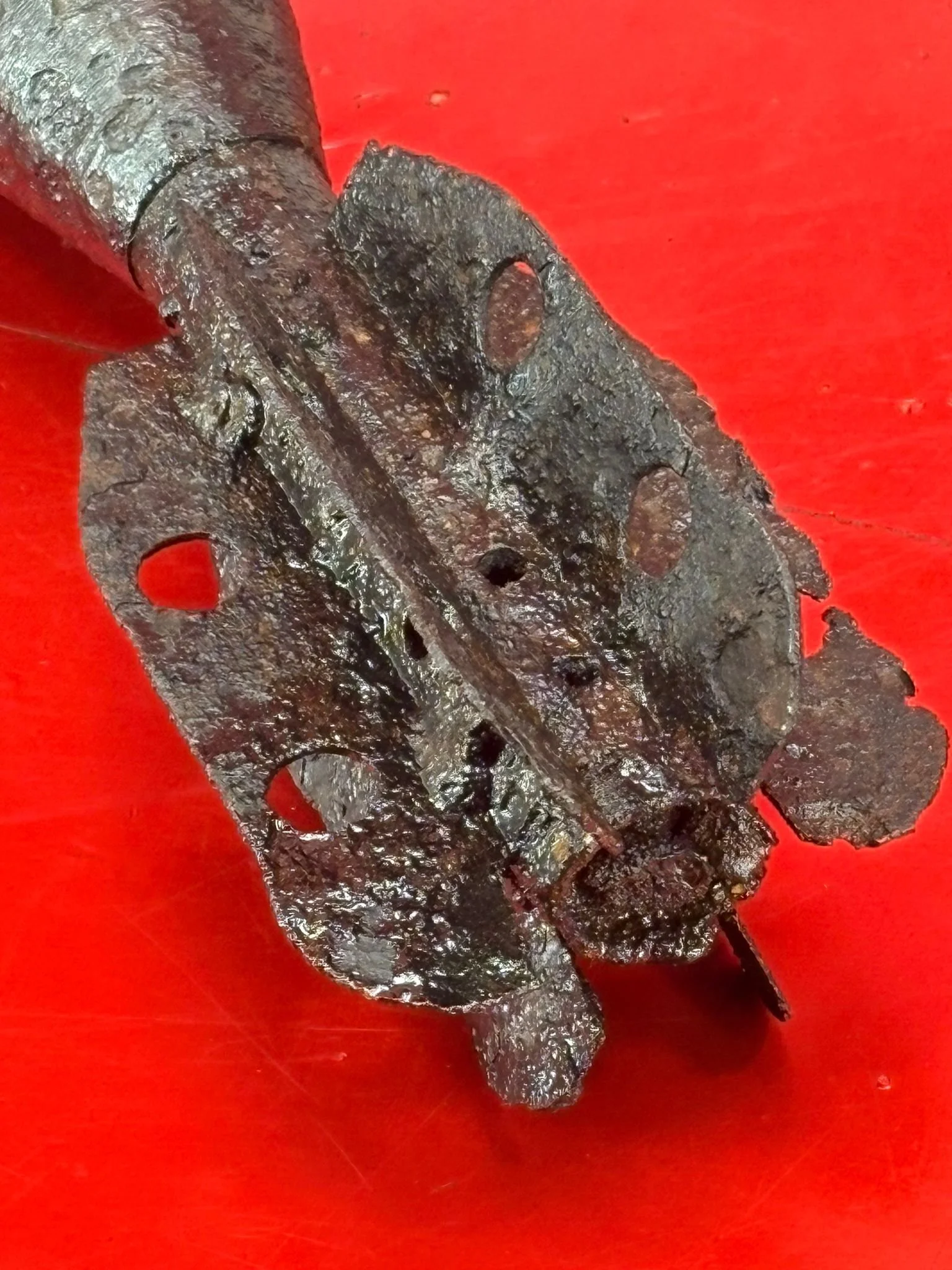 Image 6 of 10
Image 6 of 10

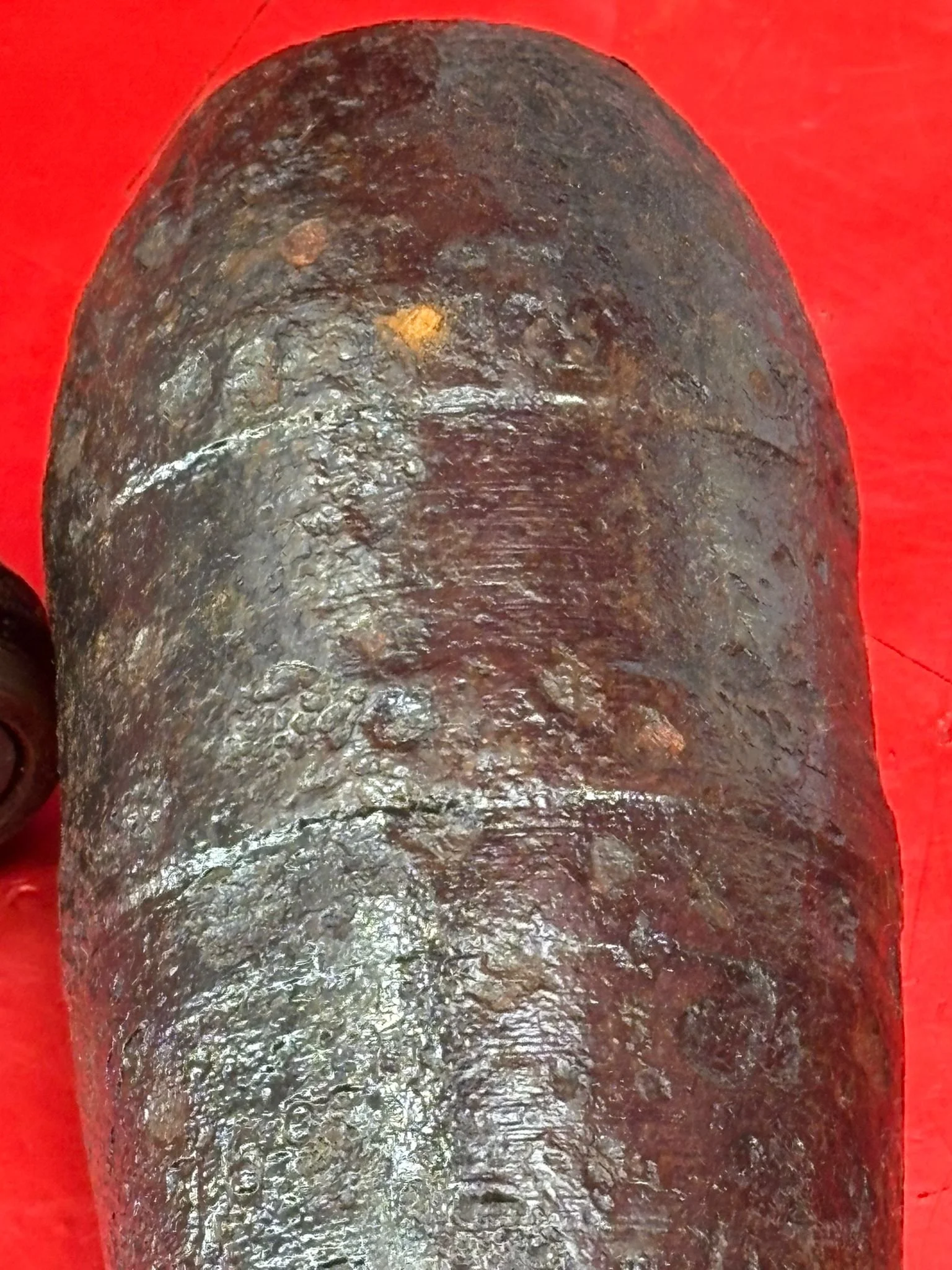 Image 7 of 10
Image 7 of 10

 Image 8 of 10
Image 8 of 10

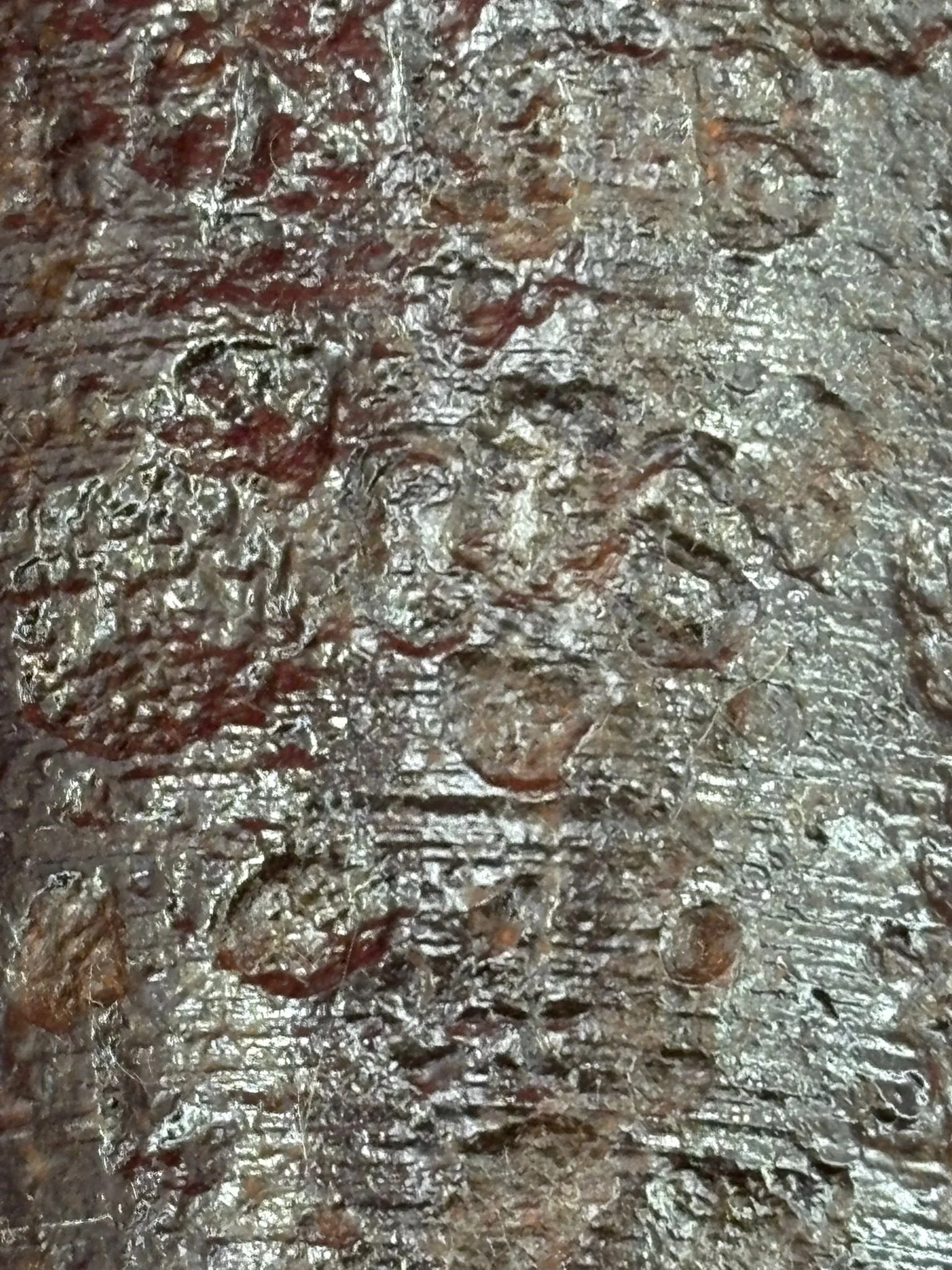 Image 9 of 10
Image 9 of 10

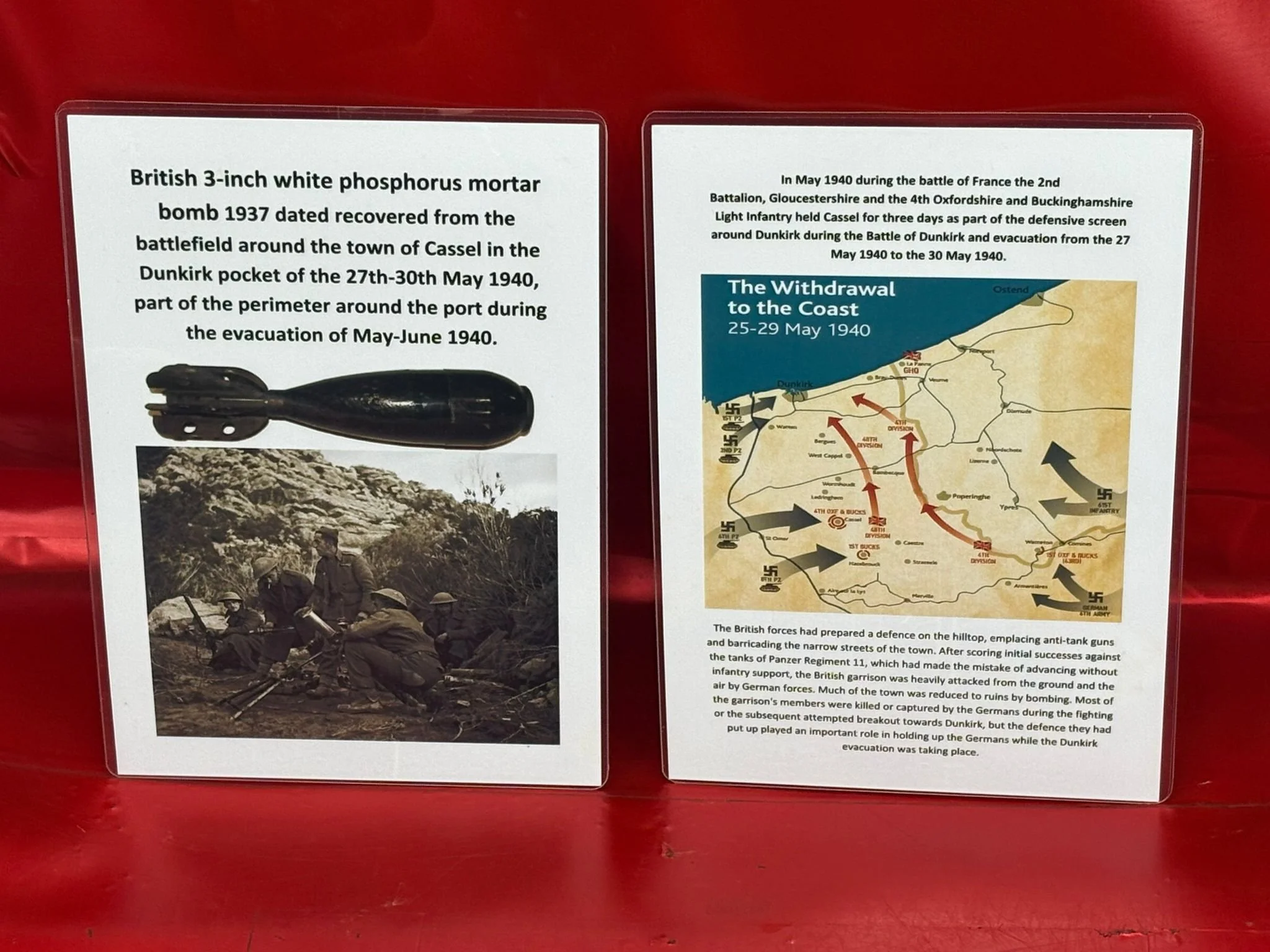 Image 10 of 10
Image 10 of 10











Very rare fantastic condition British 3-inch white phosphorus mortar bomb dated 1937 recovered from battlefield near Cassel the Dunkirk pocket 1940
This is a British 3-inch white phosphorus mortar bomb in remarkably good condition for a battlefield relic it has been overpainted black after recovery to help preservation. The mortar is completely empty and inert, making it safe for display. The body is solid and stable, showing only light pitting, and retains traces of original interior colouring as well as original colours and markings on the screw in fuse possibly some original black paint is still on the exterior as well but hard to tell for sure The piece has been thoroughly and carefully cleaned, making it a rare example of a 3 inch mortar bomb in such preserved condition especially one recovered directly from the battlefield. This would make a standout addition to any militaria collection or historical display. The mortar was probably used by men of the Gloucestershire or the 4th Oxfordshire and Buckinghamshire Light Infantry Regiments recovered from battlefield near the town of Cassel from the Dunkirk pocket of the 27th until 30th of May 1940, part of the perimeter around the port during the evacuation of May-June 1940. The bomb comes with 2xA5 laminated information cards.
In May 1940 during the battle of France the 2nd Battalion, Gloucestershire and the 4th Oxfordshire and Buckinghamshire Light Infantry held Cassel for three days as part of the defensive screen around Dunkirk during the Battle of Dunkirk and evacuation from the 27 May 1940 to the 30 May 1940. The British forces had prepared a defence on the hilltop, emplacing anti-tank guns and barricading the narrow streets of the town. After scoring initial successes against the tanks of Panzer Regiment 11, which had made the mistake of advancing without infantry support, the British garrison was heavily attacked from the ground and the air by German forces. Much of the town was reduced to ruins by bombing. Most of the garrison's members were killed or captured by the Germans during the fighting or the subsequent attempted breakout towards Dunkirk, but the defence they had put up played an important role in holding up the Germans while the Dunkirk evacuation was taking place.
This is a British 3-inch white phosphorus mortar bomb in remarkably good condition for a battlefield relic it has been overpainted black after recovery to help preservation. The mortar is completely empty and inert, making it safe for display. The body is solid and stable, showing only light pitting, and retains traces of original interior colouring as well as original colours and markings on the screw in fuse possibly some original black paint is still on the exterior as well but hard to tell for sure The piece has been thoroughly and carefully cleaned, making it a rare example of a 3 inch mortar bomb in such preserved condition especially one recovered directly from the battlefield. This would make a standout addition to any militaria collection or historical display. The mortar was probably used by men of the Gloucestershire or the 4th Oxfordshire and Buckinghamshire Light Infantry Regiments recovered from battlefield near the town of Cassel from the Dunkirk pocket of the 27th until 30th of May 1940, part of the perimeter around the port during the evacuation of May-June 1940. The bomb comes with 2xA5 laminated information cards.
In May 1940 during the battle of France the 2nd Battalion, Gloucestershire and the 4th Oxfordshire and Buckinghamshire Light Infantry held Cassel for three days as part of the defensive screen around Dunkirk during the Battle of Dunkirk and evacuation from the 27 May 1940 to the 30 May 1940. The British forces had prepared a defence on the hilltop, emplacing anti-tank guns and barricading the narrow streets of the town. After scoring initial successes against the tanks of Panzer Regiment 11, which had made the mistake of advancing without infantry support, the British garrison was heavily attacked from the ground and the air by German forces. Much of the town was reduced to ruins by bombing. Most of the garrison's members were killed or captured by the Germans during the fighting or the subsequent attempted breakout towards Dunkirk, but the defence they had put up played an important role in holding up the Germans while the Dunkirk evacuation was taking place.
